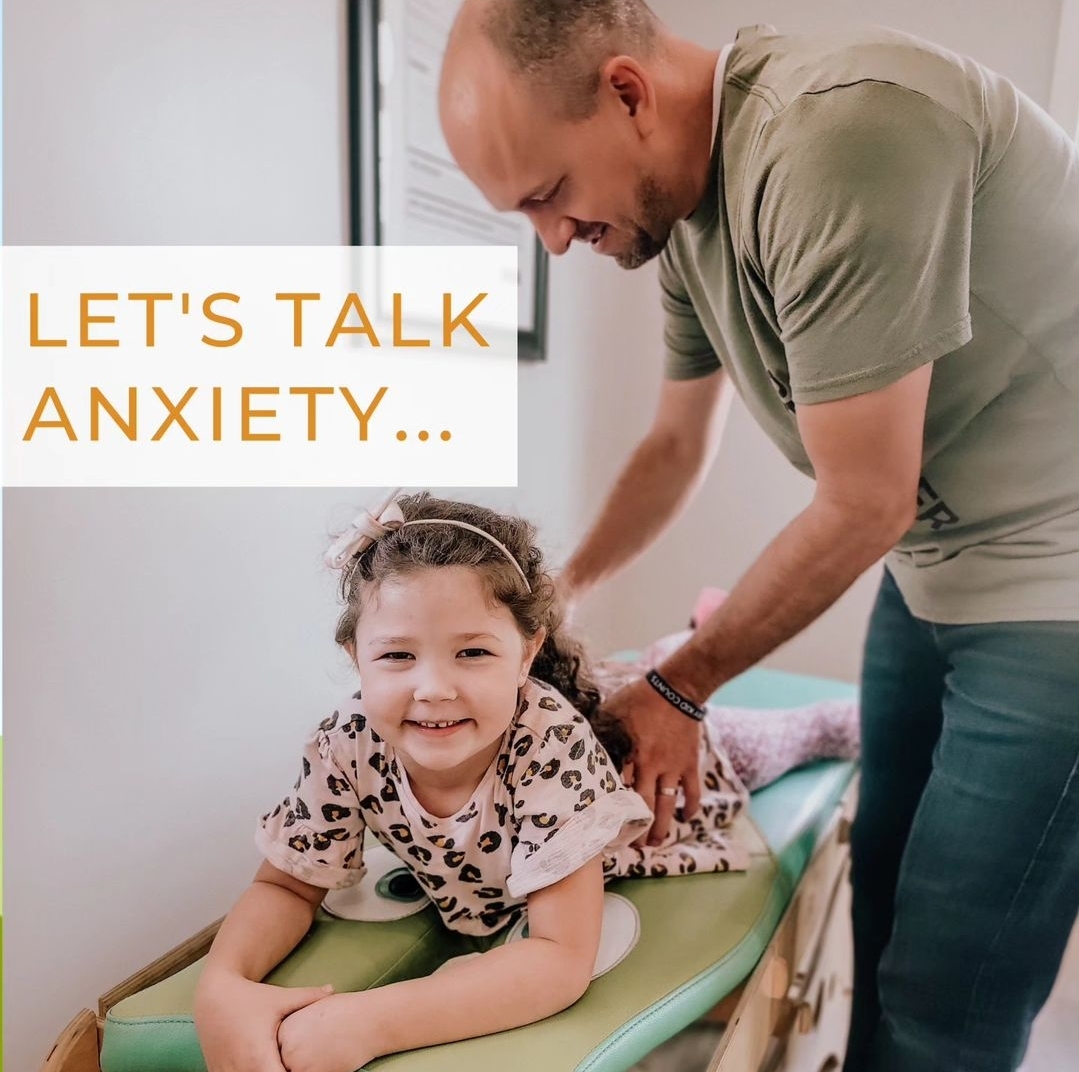
Anxiety can be overwhelming and tough enough for adults, but it’s heartbreaking to watch a child with anxiety suffer through it. It may be your six-year-old that doesn’t want to go to school, or 10-year old that suffers from the constant stomach pains that can come along with that anxiety, or the teenager that doesn’t want to engage socially with her peers because she’s so worried, stressed, and anxious. Anxiety tends to hit harder during big transitions as well.
I can’t get far into talking about anxiety without tying it all back to the nervous system and how that works. We can tackle feelings of anxiety externally, where it’s coming from, and internally, where nerves that fire together start to wire together.
EXTERNAL VERSUS INTERNAL
Stress can stack upon itself. Oftentimes anxiety starts with one external occurrence, such as a bullying situation, getting a bad test score, or you having an accident in school for little ones. After something like that happens, the brain develops these patterns that make it very tough for a kiddo to work through. That’s why the first step in tackling anxiety or worry in any kiddo, is talking to them and trying to find out the cause. That may mean talk therapy, support from a counselor or teacher, and doing what you can as a parent to figure out where this external factor of anxiousness is coming from. Once we find that out, we can help eliminate or conquer that from the external side.
The problem is, oftentimes that anxious feeling gets hardwired into the nervous system and as I mentioned, nerves that fire together, wire together. So next we need to help that internal nervous system relax so it doesn’t tie to those bad stressors.
GAS PEDAL VERSUS BRAKE PEDAL
I want to dig into what it looks like from a nervous system perspective. There is a simple analogy that we like to use and refer to as the gas pedal and brake pedal. That might sound overly simplistic, but those tie to the two sides of the nervous system – the sympathetic side or gas pedal, and the parasympathetic side or brake pedal. We can never be on these two sides simultaneously, and when kiddos get amped up with anxiety, the gas pedal side tends to go absolutely through the roof. That comes from the emotional stressors and physical side of it.
When a child with anxiety is struggling, their shoulders may come up, flexion is going to come forward, and they may not have an appetite or are dealing with constant stomach aches.
The gas pedal side of the nervous system is stuck in that fight or flight mode. It’s a protective state for our kiddos when they don’t feel comfortable. So while that anxiousness is the feeling, the root cause of it is that deep down their nervous system is in that protective fight or flight state.
You contrast this with the brake pedal. The brake pedal side of the nervous system is that rest, relaxation, good digestion, and immune function. It’s where the body is in that growth, healing, and development side. It’s usually the opposite of the worrying and overwhelming symptoms. So when a kiddo gets stuck in that gas pedal, sympathetic protective mode, they can’t easily switch back to that brake pedal side. When this happens, we need to dig deeper. The second thing we need to do for these kiddos is measure and test, using our INSiGHT scans, where all that stress is coming from because it can affect sleep, digestion, emotional regulation and behaviors. All those different factors we want to unpack to get to the root cause of.
LEANING INTO EVERY CHILD’S UNIQUE STORY
Each kiddo is unique, so each kiddo needs a unique care plan. Some kiddos need more talk therapy or counseling. But we’ve seen all of the kiddos that we’ve taken care of get so much better when there’s a neurologically focused care plan to help them with that internal side of it too. We need to help their nervous system switch from the gas pedal side to the brake pedal side, which helps their body become more relaxed and chill to get that rest and good sleep.
At our pediatric and family chiropractic office, we track kiddos’ improvements after they come in.
The majority of our kids immediately see improvements with sleep, mood, and emotional regulation after they start care.
That is the perfect recipe for helping a child with anxiety. If you can help them get better sleep and help get their emotions under control, that is going to help them so much more than medications that may leave them dealing with nasty side effects.
It’s definitely a multifaceted approach to helping these kiddos. They need the right people in their lives – you as parents to really engage with them as well as having a neurologically focused pediatric chiropractor on their side that can make all the difference if they’re struggling with anxiety, worry, or overwhelm.
We want to help because we understand that every kiddo is unique. We want to hear about your child and provide you with some hope and answers to help.
Author,
PX Docs


